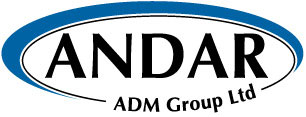Wool scouring
adds value to our national wool clip
New Zealand improvements to the technology have reduced costs, effluent production and energy use and led to this country scouring a much higher proportion of the wool we produce
Furthermore, plant supplied by a New Zealand manufacturer now scours an estimated 70% of the world’s wool.
Research by the Wool Research Organization of New Zealand (WRONZ) has led to additions to the scouring process, which significantly enhance the properties of wool.
The advances in wool scouring which have made New Zealand the world leader have followed from a close liaison and co-operation between researchers, plant manufacturers and the wool scouring industry.
What is Wool Scouring?
Wool scouring is the process of washing wool in hot water and detergent to remove the non-wool contaminants and then drying it. It has always been an important step in the wool processing train. A growing concern for the environment has led to increased demands on the scouring process.
Freedom from entanglement used to be considered the most important objective, as long as dirt and grease removal was achieved.1 Entanglement or felting results in fibre breakage during carding, gilling, and combing and has two bad effects: it reduces the mean fibre length in the resultant top and decreases the combing tear or the ratio of top to noil.2
However, reduction in pollution has become increasingly important as the pollution load associated with conventional emulsion scouring of greasy wool is extremely high.3
Recognition of the need for research led the Scourers’ Association, spearheaded by Jack Baker and Gordon Nicholls, to approach the Department of Scientific and Industrial Research (DSIR) in 1956. The DSIR arranged a technical survey of the industry, after which, scourers became members of the New Zealand Woollen Mills Research Association Inc (WIRI), since 1968 amalgamated with WRONZ.
A Learning Process
Rex Stewart, a New Zealand chemistry graduate, was recruited from the United Kingdom in 1959 and he built up the team that went on to develop the WRONZ Comprehensive Scouring System.
Work on the system did not begin immediately. The new research institution had much to learn about the industry and the scourers had to learn how best to use the new technological opportunities created by increased research. Modest advances were made in identifying and ameliorating pollution, looking at the effect of water hardness and the formulations in scouring of detergent and ‘builders’ – the chemicals such as washing soda, salt, and sodium carbon – added to detergents to improve their performance. A troubleshooting side of the research service also got plenty of practice. However, the major advance came in 1972.
The Origins of the New Technology
The patented process called the WRONZ Comprehensive Scouring System had a simple origin. A few specialists with a knowledge of the technology and machinery requirements of the New Zealand wool scouring industry decided to set down those aspects of conventional scouring that they thought were militating against efficient and continuous operation.4 The major problems included pollution, quality assurance, machinery, and material efficiency.5 A set of design requirements was established.
Once the major problems were identified, the engineering was relatively simple and when new plant was required for New Zealand Co-operative Wool Marketing Ltd at Timaru the chance came to put the engineering proposals into practice. This resulted in the first installation of the comprehensive system in 1972.
Success was further assured by the fact that WRONZ, the New Zealand scouring industry, and the major engineering company that served that industry (Annett and Darling Ltd ) had already established a close working relationship on a number of aspects of scouring technology.6
Features of the System
The WRONZ Comprehensive Scouring System is a modified form of emulsion scouring which has a number of advantages over conventional systems. The modifications principally relate to liquor circulation in association with the first scouring bowl and enable scouring to proceed continuously for long periods, thus increasing throughput and giving uniform scouring. The system involves the continuous removal of heavy settleable solids, increased recovery of saleable wool grease, and the recovery of heat from the final plant effluent allied with control over water usage.
Industry Co-operation
The designers of the comprehensive system, Stewart, Barker, Chisnall and Hoare, were fortunate in being able to work closely with a scouring plant manufacturer who provided invaluable practical advice at all stages. The manufacturer in turn introduced some plant modifications which allowed the team’s design features to be conveniently and economically incorporated.
Finally, the whole concept was gradually refined as the NZ scouring industry installed the plant and provided feedback to the machine manufacturers and WRONZ.
Without this three-sided interaction, viable export of the technology to all parts of the world would not have been possible.
Commercial Acceptance & Industry-Wide Diffusion
Installation of the prototype plant took place in August 1972. While operational problems were tackled during the first nine months of operation, scourers from all over New Zealand visited the plant, saw it in operation and appraised the performance data.18
This led to very quick commercial acceptance and, within four years, 75% of New Zealand scouring capacity was using the new system. Subsequently a few alterations have taken place, largely associated with eliminating design weaknesses, improving component selection and gradually introducing more control and instrumentation. By 1981, over fifty plants in New Zealand and other parts of the world had been converted to operate the WRONZ comprehensive system.
Mini-Bowls
Five years after the prototype had been installed, mini-bowls were introduced, greatly enhancing the performance of the original system. Two were built and installed in October 1977, substituting the first bowl of the prototype. Trade reception was excellent and a large number of mini-bowls (over 100) were built and installed in New Zealand, the United Kingdom, China, and Australia between 1978 and 1981. 19


